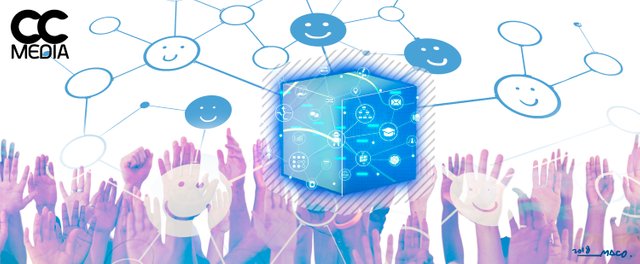
Refugees are one of the most vulnerable groups out there, spending their lives in difficult to bear circumstances. Among other worries, lack of proof of their existence only adds insult to the injury besides being unable to vote, drive, open a bank account, or utilize any other government services.
Now, with the emergence of blockchain tech, it seems that there might actually be some hope for refugees. That's because the new refugee blockchain technology aims to help these downtrodden individuals have a permanent and immutable record. Moreover, the World Bank figures reveal that over 1 billion people do not have proper proof of their identity. Among those who form part of this community include trafficked children, refugees, and homeless individuals. Besides being vulnerable, they cannot develop institutional affiliations. The problem compounds with a refugee spending longer time without such associations. Thus, it only increases their challenges in proving the existence of a record about them.
The Refugee Blockchain Technology Solution
The blockchain technology enthusiasts and socially driven entrepreneurs are trying to resolve this issue. They want to put together a refugee blockchain technology solution which helps these people in vulnerable areas. They believe the creation of such a refugee blockchain technology solution would help create immutable records. Besides ensuring presence of the record whenever someone needs to access it, the solution would also help increase financial transactions’ efficiency besides making them cost-effective.
Refugee Blockchain Technology to Rely on Distributed Ledger
The presenters of the refugee blockchain technology seem to want to take full advantage of a distributed ledger. The distributed ledger will not rely on a central authority for verification of their existence. There is also no need for any central authority to verify these transactions. Thus, it makes it difficult to tamper with the financial records and make the funds meant for refugees less vulnerable to exploitation.
Moreover, the idea is to give power to the individuals, allowing them to create records over time. The refugees would then be able to use these records across borders to prove their identity. Thus, this refugee blockchain technology solution would help bridge the trust gap. The refugees would not need to rely on a central authority, for example a central bank or government, of a country to vouch for them.
Current Use of the Refugee Blockchain Technology
Finland’s Finnish Immigration Services is already working on introducing this refugee blockchain technology. Finnish Immigration Services are collaborating with Helsinki startup MONI to build a solution for the refugees. MONI works on creating a digital identity, containing records for one’s financial transactions, which are stored on a blockchain.
The Moldova government is also working with the digital identification experts of the United Nations Office for Project Services (UNOPS). The project aims to use a blockchain in order to provide children of rural areas with digital identities, making it difficult for traffickers to smuggle them across the borders.
One of the other notable programs was launched by the United Nations World Food Program (WFP) in Jordan. Under this program, the UN provides the Azraq Refugees Camp with vouchers for shopping at local grocery stores. The solution relies upon biometric authentication (retina scan). The transactions have a permanent record on an Ethereum based blockchain known as Building Blocks.
This solution eliminates the need for WFP to make payments to the banks. Thus, WFP is able to save a monthly transaction handling fee of $150,000 in Jordan only. The WFP wants to expand the technology across other affected areas, letting refugees not just access food through vouchers but also create a permanent record of the transactions.
Conclusion
Refugees have to face a lot of problems, and it becomes extremely difficult for them to get their rights in a foreign country. Similarly, large scale non-profit projects may be susceptible to corruption, offering no transparency. Thus, the refugee blockchain technology would hopefully overcome such problems and ensure that refugees are able to easily prove their identity.
Posted from my blog with SteemPress : https://cryptocoremedia.com/refugee-blockchain-technology-help-vulnerable/